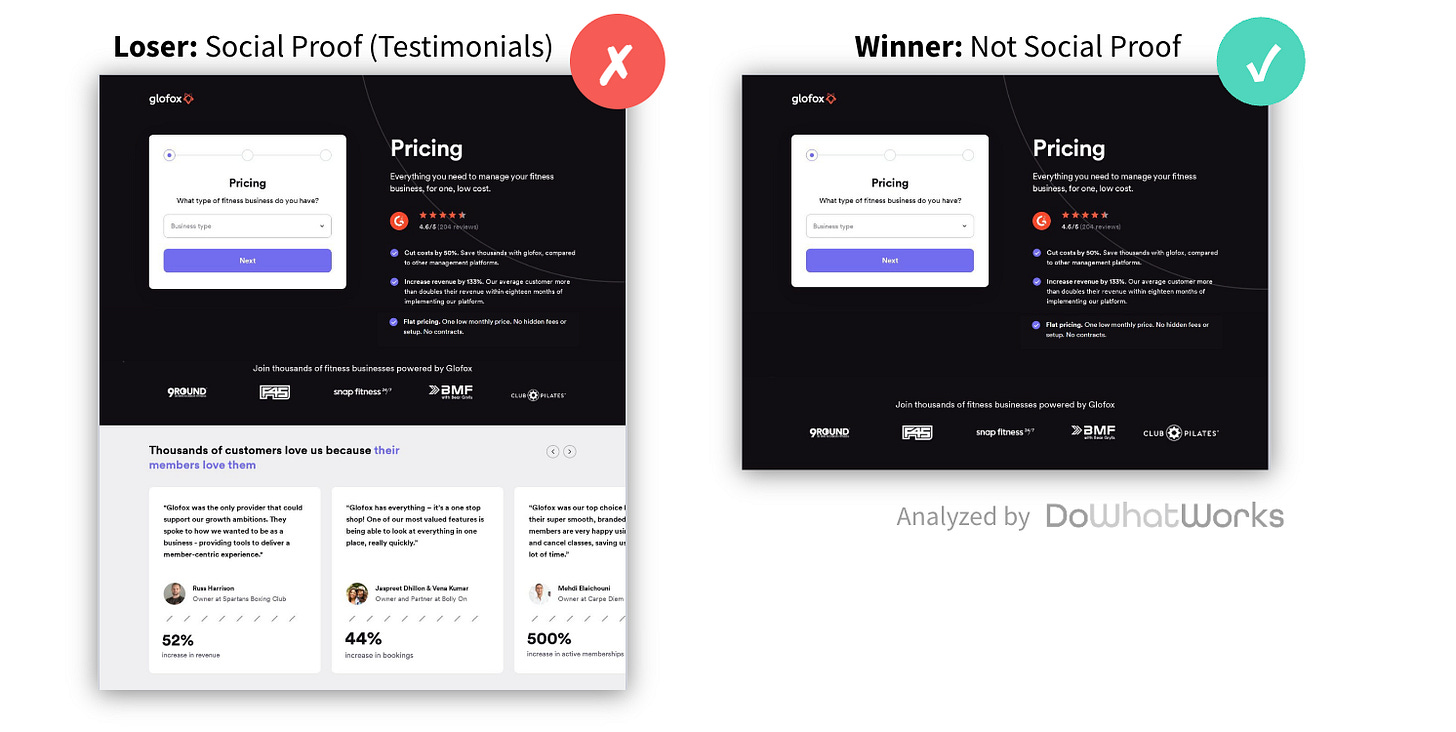Surprising lessons from 20,000 experiments
An inside view into what works (and what doesn’t) to improve website conversion
Welcome back to the 12th edition of The Gist by Growth Unhinged where I give you one specific action item to grow faster. Past editions have covered how to deal with fake accounts, how to ask about willingness-to-pay, revisiting your automated email program, and rethinking “time savings” as your central value proposition.
In this edition: what growth experiments not to run. Specifically, what you shouldn’t add to your website, statistically speaking. Yes, this is your excuse to kill something from your backlog (finally!).
Helping me out is Andres Glusman, former VP of product and growth at Meetup and current founder and CEO of DoWhatWorks. Andres and his technology have detected and analyzed growth experiments from every major brand – more than 20,000 experiments and counting. DoWhatWorks uses that data to help major brands grow faster. Now they’re letting Growth Unhinged readers use some lessons from everyone’s tests to get better results.
Let’s dive in 👇
The Gist
To improve website conversion, try doing less. Simple and straightforward beats complicated and overworked.
Why you should care
Growth experiments are almost always about addition:
What if we add more social proof?
What if we add a video?
What if we add an email capture box?
Adding things is how we justify our contributions and expertise… right?! Lately, the evidence proves it’s often better to remove rather than add. Especially when it comes to social proof.
Simplified and stripped down keeps prospects focused on completing the core action you want them to do. And it exudes a sense of confidence that the brand (and product) stands on its own without unnecessary clutter.
Tell me more
I asked Andres to investigate the growth experiments that get tested all the time yet almost never seem to work. Many are tests related to adding elements. Three specific ones stood out as exceptionally poor bets based on the proprietary BetScores calculated by DoWhatWorks.
1. Social proof in B2B plan selection
When designing a pricing page, we want to put ourselves in the best possible light. Social proof justifies our pricing and might put a buyer’s lingering fears to rest. In fact, the ‘strategic logo bomb’ was flagged as a quick win in a recent byline in this newsletter.
But data shows these tests rarely work when they go head-to-head against a simpler alternative. In fact, DoWhatWorks gives not showing social proof a BetScore of 85 (their scale runs from 1 to 99). This means your team’s limited bandwidth would be much better spent working on something else.
Recent examples they’ve tracked include Dropbox, Jotform and Glofox (all shown below). At Jotform, for example, the simpler “why choose Jotform” messaging was ultimately preferred rather than inserting an extraneous “Jotform is a trusted G2 leader” section above it.
I suspect this will come as a relief to many; removing the social proof section also means not needing to constantly update this section at the whim of executives or finicky enterprise customers.

2. Videos on the homepage
Keep reading with a 7-day free trial
Subscribe to Kyle Poyar’s Growth Unhinged to keep reading this post and get 7 days of free access to the full post archives.







